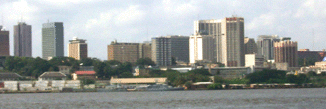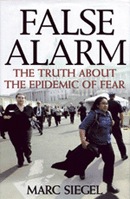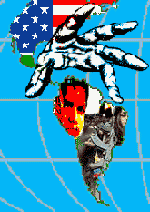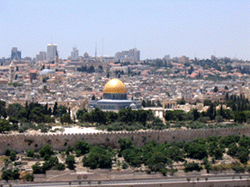
Archives

.gif)
Time for Transparency in the EU
The Dutch and French rejections of the EU constitution make the time ripe for strong measures to create more transparency around lobbying in Brussels. The European Transparency Initiative, created by Vice President of the Commission, Siim Kallas, must not miss this opportunity. The EU's democratic deficit has long been discussed, andyet never seems to go away. The perception continues that the EU is an impenetrable fortress, where corporate and political elites make decisions with no room for citizens' involvement. The estimated 15,000 lobbyists in Brussels, the vast majority working for business interests, combined with dubious public affairs practices and a lack of any credible mechanism for ensuring transparency, give credence to this perception.

Manufacturing High Anxiety
"Are you and your family at risk?" Almost anyone who watches television has heard that teaser during the news. The answer is often no, but the question itself has the power to set off a panic reaction that leads people to rush out for the latest cure or recommended precaution.
Several years ago, Dr. Marc Siegel, a practicing internist in New York and frequent guest on TV news programs, began to notice what he calls "free-floating communicated fear" was causing his patients to personalize risks that were actually quite remote. In his new book, False Alarm: The truth about the epidemic of fear, he has assembled a convincing case that, misdirected by political opportunists and irresponsible media, we too often worry about the wrong things, and that fear itself poses a greater risk than any "bug du jour."

Operation Latin American Freedom
Preparations are underway for renewed US militarization and intervention in Latin America. To protect its own hegemony and economic interests, the US government is using the threat of terrorism as an excuse for military operations aimed at destabilizing leftist movements and governments and securing natural resources such as oil and gas.
By focusing on social programs in education, land reform and healthcare, many of the region's new leaders have put the needs of the people ahead of the demands of multinational companies. This leftist resurgence makes corporate investors and other harbingers of the free market nervous. Recently, the Bush administration has gone to extreme measures to ensure that this leftist trend is put in check.

Creating Momentum: Youth and the Anti-War Movement, Part II
While many of their peers are being recruited to serve in Iraq and Afghanistan, high school and college students across the country are engaging in a grassroots effort to stop militarization and recruitment in their schools. The growing number of counter-recruitment efforts and the large turnout among young people at the September 24th anti-war march in Washington DC are evidence that youth are providing essential momentum to the anti-war movement. Before surveying the growing counter-recruitment movement and its potential, it is helpful to recognize where student anti-war activists find their inspiration to get involved in these issues. This is particularly important when considering the challenges of isolation, apathy and consumerism facing young people today.

